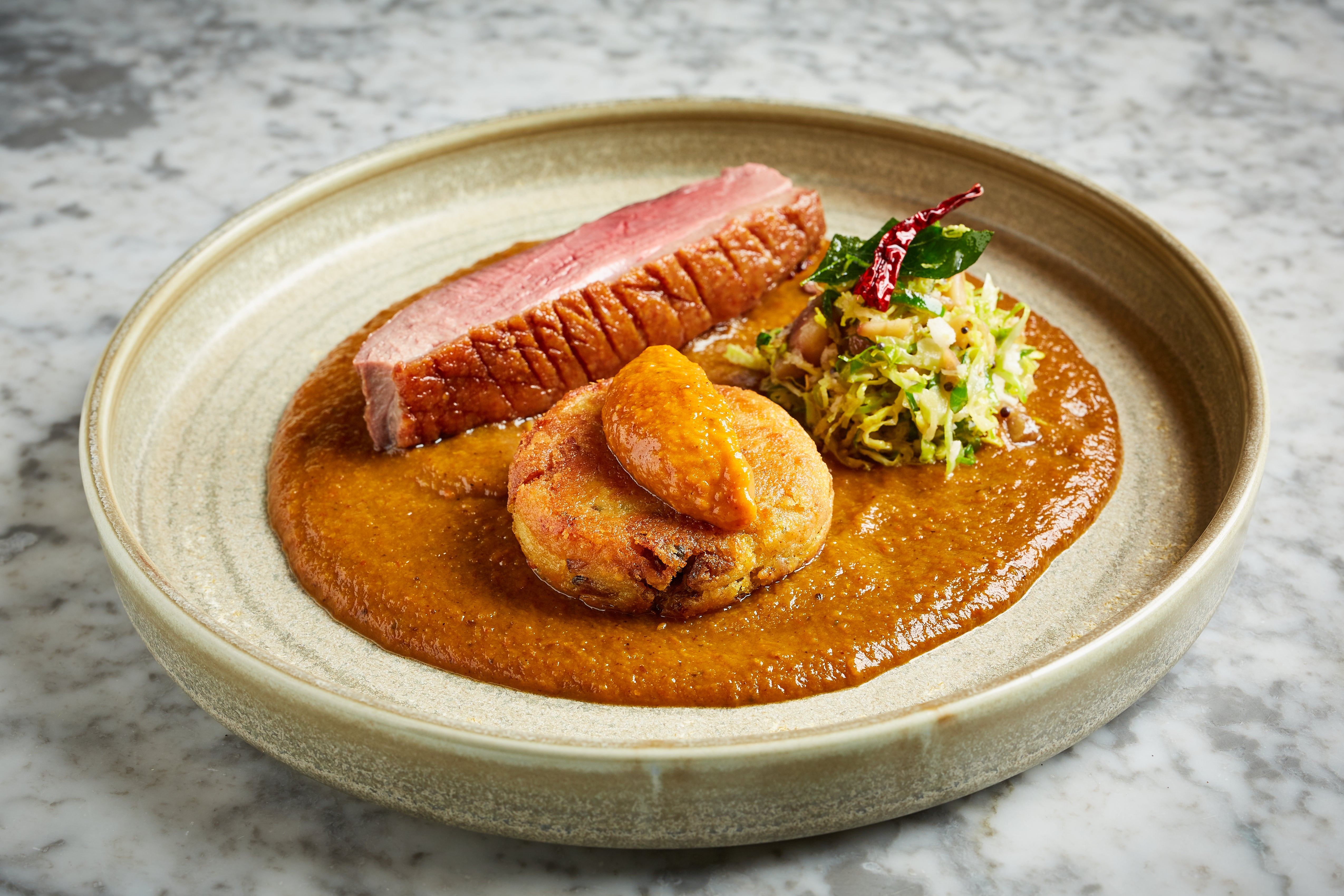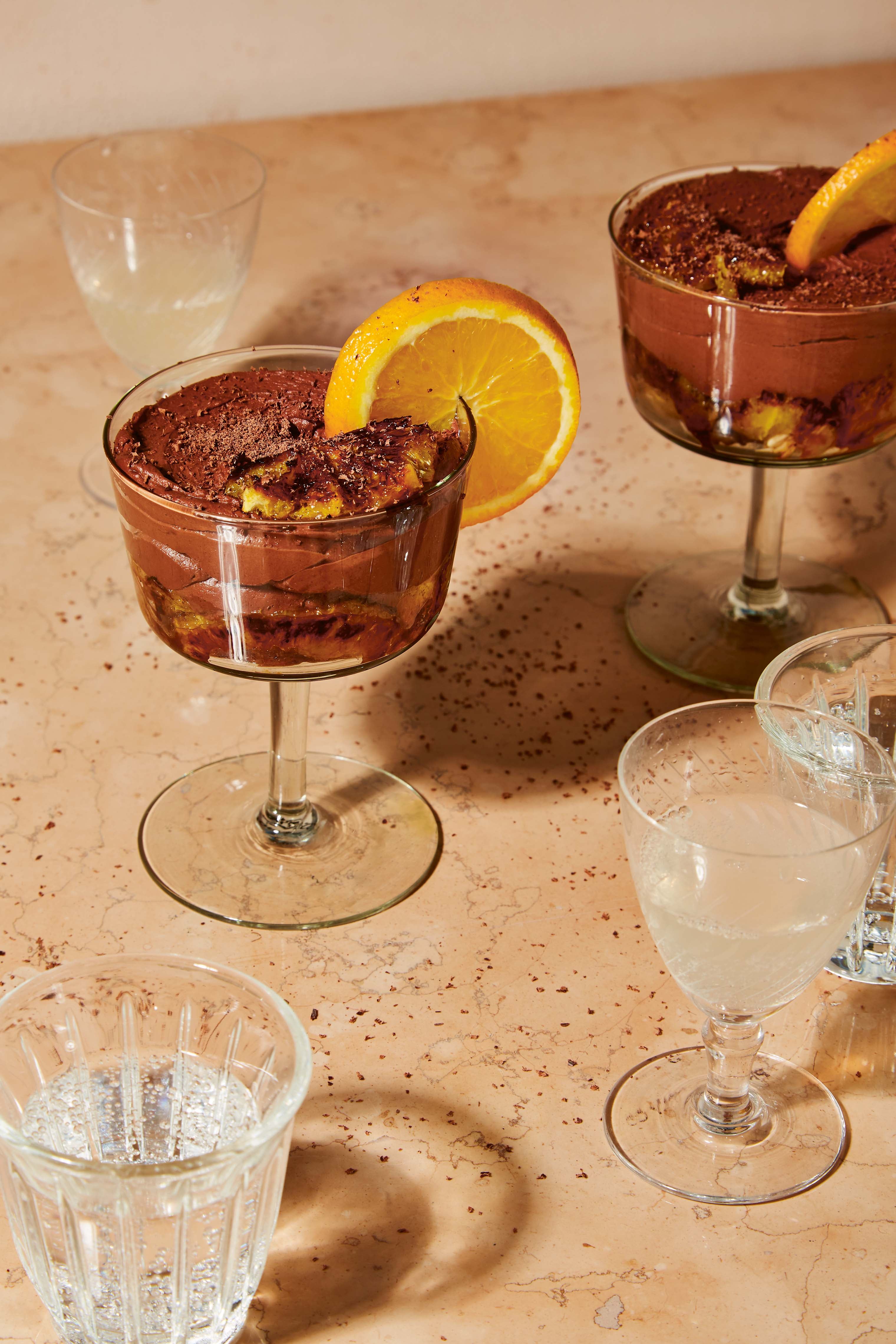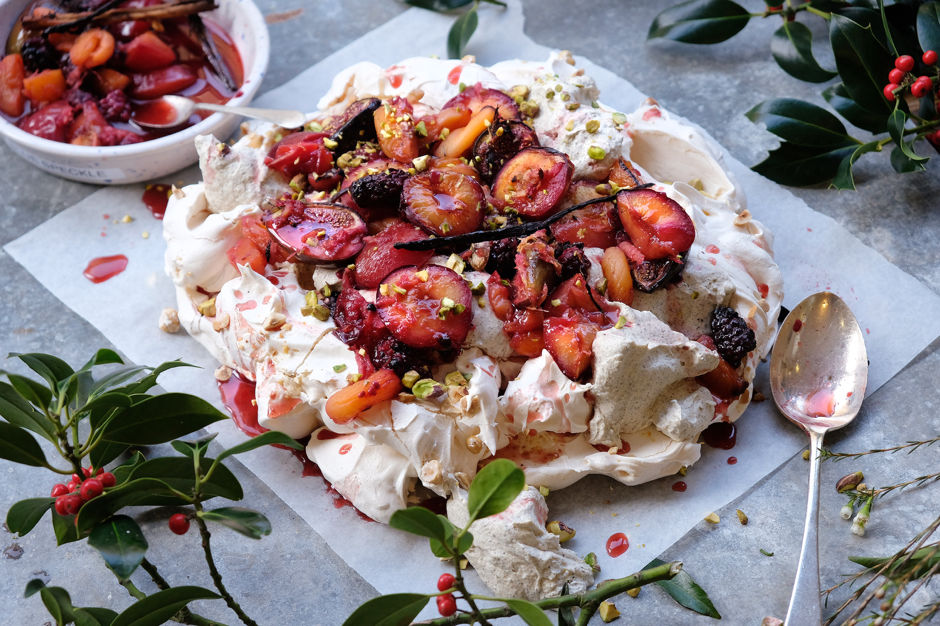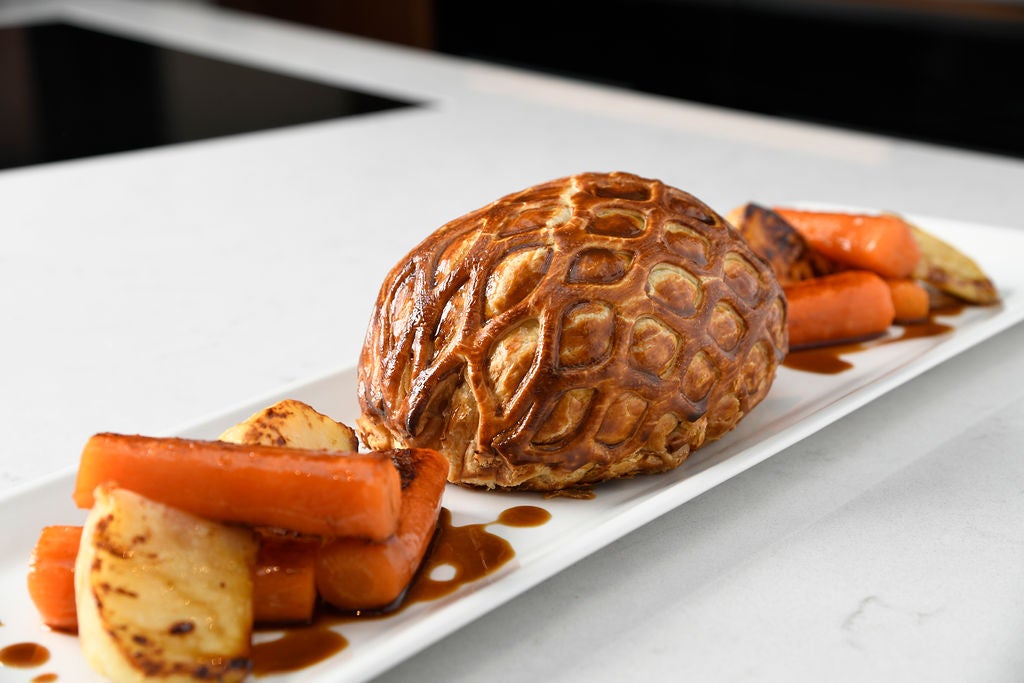What do the country’s top chefs like to eat at Christmas?
Given all the chaos of the last few years, why not break with tradition and try some of these new dishes?

Your support helps us to tell the story
From reproductive rights to climate change to Big Tech, The Independent is on the ground when the story is developing. Whether it's investigating the financials of Elon Musk's pro-Trump PAC or producing our latest documentary, 'The A Word', which shines a light on the American women fighting for reproductive rights, we know how important it is to parse out the facts from the messaging.
At such a critical moment in US history, we need reporters on the ground. Your donation allows us to keep sending journalists to speak to both sides of the story.
The Independent is trusted by Americans across the entire political spectrum. And unlike many other quality news outlets, we choose not to lock Americans out of our reporting and analysis with paywalls. We believe quality journalism should be available to everyone, paid for by those who can afford it.
Your support makes all the difference.This year, after 2020’s Christmas chaos and various lockdowns spent nurturing your culinary prowess, you might be feeling adventurous when it comes to dinner on the big day. Who better to turn to than some of the UK’s top chefs?
From Paul Ainsworth’s classic beef Wellington to “Christmas with a twist” curried goose from the mind behind popular Indian restaurant Kricket (not to mention a vegan chocolate orange and Amaretto mousse to die for), there’s a bit of everything in this recipe roundup.
Goose vindaloo, confit leg aloo tiki, brussels sprout and chestnut thoran, apple achaar
Recipe from: Kricket: An Indian-inspired Cookbook by Will Bowlby
Serves: 4
Ingredients:
2 goose breasts, skin scoured
For the vindaloo masala:
- 50g dried Kashmiri chillies
- 200ml malt vinegar
- 5 cloves
- 1 tsp cumin
- 1 cinnamon stick
- 3 star anise
- 5 green cardamom pods
300g diced white onion
2 green chillies, split
2 tbsp ginger/garlic paste
1 goose leg
20g salt
20g sugar
2 tsp Kashmiri chilli powder
500ml goose fat
2 large Maris Piper potatoes
2 tsp ginger, finely chopped
2 tsp garlic, finely chopped
1 tsp cumin powder
1 tsp coriander powder
1 tsp chilli powder
½ tsp turmeric
1 tsp roasted gram flour
1 tsp finely chopped fresh green chilli
1 tbsp fresh coriander, finely chopped
Ghee, to shallow fry
200g Brussels sprouts, finely shredded
1 tbsp coconut oil
1 tsp black mustard seeds
10g fresh curry leaves
3 dried red Kashmiri chillies
50g fresh coconut
Salt, to taste
50ml lime juice
30g chestnuts finely chopped
2 large cooking apples
1tsp cumin seeds
1tsp fennel seeds
50ml rapeseed oil
1 red onion, finely chopped
1 small thumb size piece of fresh ginger
1 tbsp Kashmiri chilli powder
100g soft brown sugar
50ml malt vinegar
Salt, to taste
Method:
1. Soak all the ingredients for the vindaloo masala in malt vinegar overnight so that the spices soften, blitz to a fine puree. Make a cure for the goose leg by combining the salt, sugar and chilli powder. Coat the leg in the cure and leave for 2 hours. Remove the cure from the leg with cold water and transfer to a small roasting tin. Pour over the goose fat and bake in a preheated oven at 160C for 2 hours or until the meat is tender and flakes away from the bone, remove from the oven and allow to cool in the fat. In the same oven, roast the Maris Piper potatoes, skin on, for a further hour until the flesh is soft. Remove from the oven, allow to cool slightly before removing the flesh from the potato into a bowl. To the potato add the ginger, garlic, cumin, coriander, chilli and turmeric powder, roasted gram flour, green chilli and chopped coriander, season with salt. Mix well and shape the potato mix into 40g balls and lay on a baking tray. Shred the leg meat and place 20g of it in the middle of the potato mix, and bring the outside of the potato mix into to encase the leg meat, shape into patties and keep for later in the fridge.
2. To make the vindaloo sauce, add the diced onions to a saucepan with a little oil. Cook out until the onions begin to soften, add the green chillies and ginger/garlic paste and continue to cook out until the onions have caramelised. Add the vindaloo masala and continue to cook for another 15-20 minutes. You can add a little water at this stage to stop the onions from catching. After 20 minutes blend the mixture in a blender or using a stick blender until smooth. The onions and any additional water should provide enough liquid to loosen the sauce. Season with salt and sugar.
3. For the Brussels sprout thoran, heat up coconut milk in a frying pan, add the mustard seeds and when they start to splutter add the curry leaves, dried chilli, Brussels and coconut and continue to stir over a high heat until the sprouts have softened slightly. They should still retain a little bite to them.
4. For the apple chutney, heat up two tbalespoons of oil in a pan and add cumin seeds and fennel seeds. When they start to splutter add the onion, ginger, chilli powder and continue to cook until the onions have softened. Add the apples and continue to cook out until the apples have softened. Blend the mixture to a smooth puree, season with salt and sugar and set aside.
5. Score the goose breast on the skin and add to a cold dry pan and cook over a medium heat to render the fat on the breast. Transfer to an oven at 165C for 6-7 minutes, depending on the size of the breast, and leave to rest for a further 15 minutes. In that time, heat up ghee in the same pan as you cooked your breast, add the aloo tiki and fry until crisp. To assemble, place a ladle of your hot vindaloo on the plate followed by your goose breast, that’s sliced in half. Place the aloo tiki on the sauce and add a spoon of the apple chutney on top of each tiki. Garnish with the thoran.
Chocolate orange and amaretto mousse

Very few ingredients are needed to make this incredibly light and satisfying mousse. It has an added grown-up twist of Amaretto, which can easily be skipped for little ones.
Recipe from: Celebrate by Bettina Campolucci Bordi
Serves: 4
Ingredients
320ml (11fl oz/1⅓ cups) good-quality coconut cream or refrigerated full-fat tinned coconut milk
3 tbsp runny peanut or almond butter
3 tbsp cacao powder
2-3 tbsp maple syrup
2 tbsp Amaretto
Zest of 1 orange
For the caramelised oranges:
1 tsp of coconut oil
3 oranges, peeled and cut into slices
½ vanilla pod (bean), split and the seeds scraped out, or ½ tsp vanilla extract or paste
To serve:
Grated dark chocolate, with at least 70 per cent cocoa solids
4 slices of orange (optional)
Method
1. Add the coconut cream and all the other ingredients to a bowl. Use an electric hand-held whisk to mix everything together until fluffy (be careful not to overblend).
2. To make the caramelised oranges, heat the coconut oil in a small to medium saucepan and fry the orange slices before finishing off with the vanilla.
3. To serve, add a couple of caramelised orange slices to the bottom of each serving glass and spoon in the mousse. Top with grated chocolate and an orange slice (if using).
4. Refrigerate before serving or eat immediately.
Hazelnut pavlova with spiced roast fruit and chai cream

A triumphant dessert. We love making a pavlova, it is always impressive and it’s so easy to make – and it goes a long way too! The sweet and tart caramelised fruits infused with their warming spices, the nutty meringue and cooling cream is pure happiness. And a damn good alternative to the steaming rich Christmas pudding. A light and chewy marshmallow base with its snowy peaks topped with magnificent glistening boozy fruit – a good fit for the end of festive celebrations. Yes, there is nothing quite as exciting as the hot flaming traditional pud, the sheer extravagance of it all with its ancient ingredients, the time and effort required to produce and then being rushed around the table, flames leaping from the plate – but we can assure you you will be met with gasps of delight from your guests when you present this showstopper if you are seeking an alternative.
We had originally thought to make chai tea meringues, inspired by a dessert we recently made for an event – Earl Grey meringues with brandy cream, Cointreau-soaked clementines and pomegranate. Grinding the tea to a fine powder and adding it to the sweet meringue mixture works well and adds a heavenly fragrance that’s not overly spiced. For us, the Chai meringues worked if serving as a tiny portion, almost a canape, but it was too much when settling down to a generous scoop of pavlova. Wanting to keep the chai flavours in the dish, we decided to add them to the cream. The preferred route is to infuse the cream by simmering it with the chai ingredients (we use cardamom, nutmeg, cinnamon, cloves, ginger), then cool the cream and whisk. The bore about this way is after the cream has been heated you need to refrigerate it for a while and it takes a very long time to whisk up, but you do end up with a clean white cream. The quicker option is in our recipe below. Either way is delicious. The tea that we have been using is by Wedgewood, a wonderful discovery and we thought we would let you in on this secret.
Ingredients:
A handful of the following:
- Plums, halved and de-stoned
- Figs, halved
- Dried apricots, halved
- Blackberries
1 vanilla bean
1 cinnamon stick
1 star anise
1 glass of white wine
1 tbsp brown sugar
Juice of ½ lemon
6 egg whites
300g caster sugar
100g hazelnuts, toasted and chopped
600ml double cream
1 tbsp chai tea
Pistachio, to garnish
Method
1. Heat the oven to 200C. Pour the wine and sugar into a small pan and bring to a simmer, slice the vanilla pod in half, scrape out the seeds and add to the wine, along with the pod itself and the lemon juice and simmer for another couple minutes. Place the fruit in an oven-proof dish, pour over the wine and place in the oven for about 15 minutes. Take out the oven and leave to cool.
2. Turn the oven down to 120C. Place the egg whites in a bowl and whisk to soft peaks, very slowly add the sugar – a spoon at a time until all combined and it should be thick with a good shine to it. Add the hazelnuts and carefully fold in with a metal spoon. Line a baking tray with parchment and spoon the meringue onto the tray – we like to make one large one, but you could make smaller ones if you wish. Place in the oven and cook for about 40 mins – you want it to be crisp on the outside yet chewy in the middle.
3. Place the chai tea in a spice grinder or pestle and mortar and grind to a fine powder. Place the cream in a bowl and whisk till it’s beginning to thicken and add the chai powder, taste and add more if necessary. Whisk to soft peaks – don’t over-whisk.
4. To assemble, place the meringue on your serving platter, spoon over the cream then place the fruit on top and finish with sprinkling over chopped pistachios.
Beef Wellington

Recipe by: Paul Ainsworth
Ingredients:
1 white onion, finely chopped
1 sprig of thyme
1 bay leaf
30g unsalted butter
2 pinches sea salt
2 pinches pepper, ground black
2 cloves garlic, finely chopped
500g flat mushrooms, chopped finely in a food processor
400g Old Cornish sausage meat
10g English mustard
10g flat leaf parsley, finely chopped
2g tarragon leaves, finely chopped
1kg beef fillet
2 pinches sea salt
2 pinches black pepper, ground
30ml vegetable oil
6 slices Parma ham
500g puff pastry, all butter, rolled to 15cm-by-30cm and ½cm thick
2 egg yolks
1 pinch salt
Method:
Step 1:
1. In a large saute pan, on a medium heat, gentle sweeten the onions and herbs in the butter with a couple of pinches of salt and pepper for 5 minutes covered with a lid.
2. Once they are translucent and soft, remove the lid, increase the heat to high, add the garlic and cook for 20 seconds stirring constantly to reduce the liquid from the onions and cook out the raw garlic.
3. Add the finely chopped mushrooms and cook for 10 minutes stirring all the time until they are cooked through and all the moisture has evaporated.
4. Add the chopped herbs and leave to cool slightly then add to your sausage meat to make a mushroom and sausage mix, cling film and place into the fridge to cool completely
Step 2:
1. Season the fillet of beef with salt and pepper.
2 . Pre-heat a large frying pan on a high heat and sear the beef in the oil for no longer than 2 minutes.
3. Place onto an oven tray and brush with the English mustard and leave to cool while you roll out your puff pastry.
4. Ensure the pastry is rolled out to a thickness of 2mm and is roughly 30cm-by-35cm wide.
Step 3:
1. Between two pieces of baking paper place your mushroom and sausage mix and roll out to the same width as the beef and about 30cm wide. Remove the top paper and place your beef on top and wrap the rolled mixture around the beef encasing all the beef in the sausage mixture. Wrap the beef barrel in cling film and leave to chill.
2. Next lay the sheets of Parma ham down overlapping each piece to the same size as you did with the sausage mix and wrap this around your beef and sausage barrel tucking in the edges re-wrap again in cling film and chill.
3. Brush the pastry with the egg wash. Remove the cling film from the beef, then wrap the pastry around each ham-wrapped fillet. Firmly press the overlap of pastry to seal in the beef and tuck the edges underneath. Trim the pastry and brush all over with the egg wash
Step 4:
1. Place this onto a tray lined with greaseproof paper and, using a small knife, gently score the pastry with whatever pattern you choose. Or for a different effect, roll out some puff pastry to 2mm thickness and using a lattice cutter make a pattern and stretch this over your pastry, sealing the edges in at the base.
2. Brush with the remaining egg yolk and leave to rest in the fridge while you pre-heat your oven to 200C.
3. Cook for 15-20 minutes until the pastry is golden brown, use a thermometer probe and the core temperature should be around 40/43C from the oven, now leave to rest for at least 15-20 minutes.
4. Carve it at the table with a little red wine sauce and vegetable of your choice.
Partridge in a pear tree (partridge, pear, parsnip and chocolate)
I just love Christmas in the kitchen, it’s truly one of my favourite times of the year to cook. I don’t always go for the obvious, although I do love traditional turkey with cranberry sauce and Brussels sprouts. When I want to cook something a bit different, a firm favourite is my “Partridge in a Pear Tree”, a dish of partridge, pear, parsnip and chocolate, which surprisingly work very well together as flavours. It’s a real showstopper and great fun to prepare; a festive treat!
Serves: 4
Ingredients:
Four partridges, plucked, drawn and singed
One pear
Two parsnips, peeled and chopped
One shallot
20g dark chocolate (at least 70% cocoa solids)
200ml full-bodied red wine
50ml port
1 tsp sherry vinegar
100ml whole milk
2 tbsp butter
Four leaves kale or cabbage, sliced
Salt and pepper
Method:
1. Pre-heat the oven to 200C/gas mark 7. Using a very sharp knife, remove the legs and the breasts from the partridges. Place what remains of the partridges the carcasses on an oven tray and put into the oven to roast for about 20 minutes or until the bones have browned and the juices are caramelising. Leave the oven on; you will need it again soon.
2. Chop the shallot finely. Melt a knob of butter in a medium-sized pot and sweat the chopped shallot. While the shallot is cooking, take the carcasses from the oven and chop them roughly. The reason for this is to fit them comfortably into the pot with the shallots.
3. When you have done so, add the red wine and the port and bring to the boil. Reduce the volume of the liquid in the pot by two-thirds.
4. Pass this reduced liquid through a sieve into a small pot and whisk in the chocolate and the vinegar, off the heat. This will be your sauce. Make sure it does not boil or the chocolate will coagulate and go grainy and lumpy. So, when keeping warm, use a very low and gentle heat.
5. Heat a heavy pan with a knob of butter. Peel the pear, core it and cut it into lengthways into four wedges. Put the wedges in the pan and roast them until coloured and slightly softened.
6. Heat the milk in a medium pot and add the parsnips with a pinch of salt. Simmer until the parsnip is soft, then transfer the whole lot (parsnip, milk and all) to a blender and whizz with a little butter and seasoning until smooth. Keep warm.
7. Bring a large pot of salted water to the boil. Add the kale or cabbage leaves and cook until just tender. Be careful they do not get overdone or the texture and the flavour will suffer.
8. Melt a knob of butter in a frying pan. Fry the partridge legs for three minutes, then add the breasts to the pan and let them brown for a few moments. Transfer the pan to the oven and cook for a further five minutes. If you want to keep the meat moist and this is really important with partridges you must be really careful not to overcook it.
9. Serve the partridge with the parsnip puree, the kale or cabbage, a wedge of the pan-roasted pear and a little chocolate sauce spooned over the top.



Join our commenting forum
Join thought-provoking conversations, follow other Independent readers and see their replies
Comments